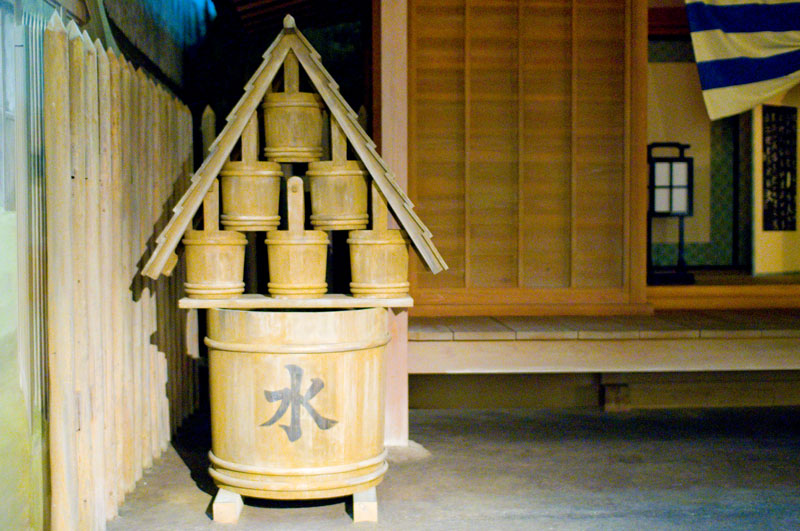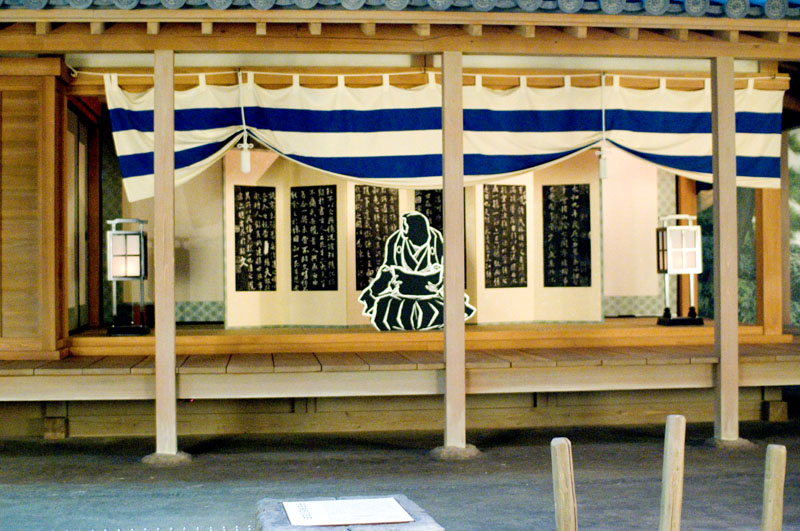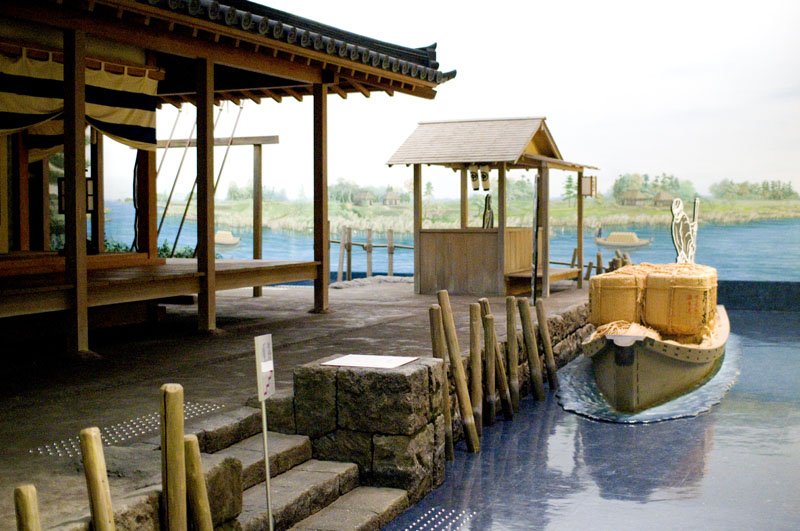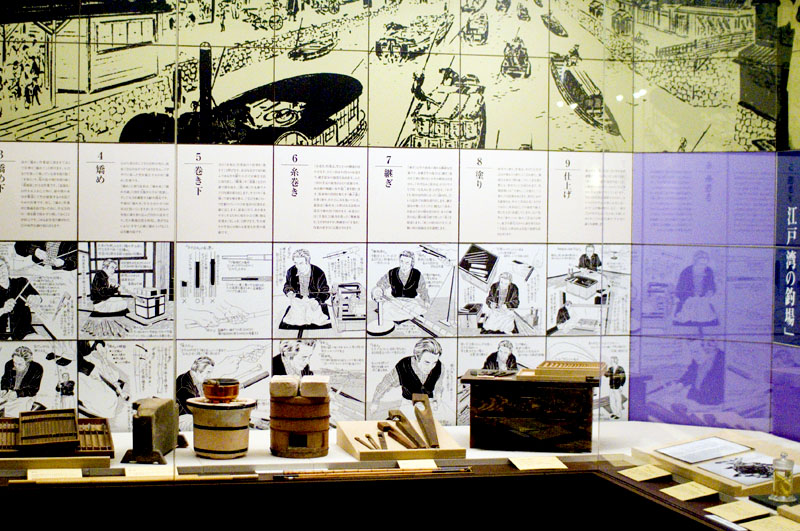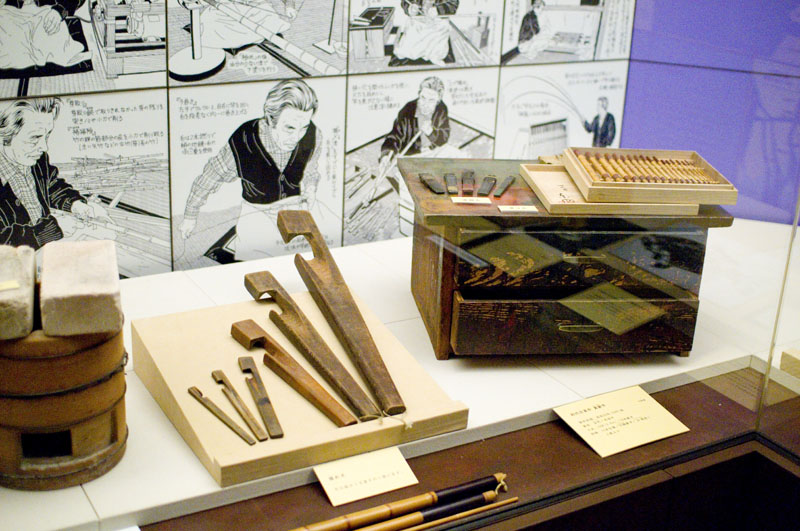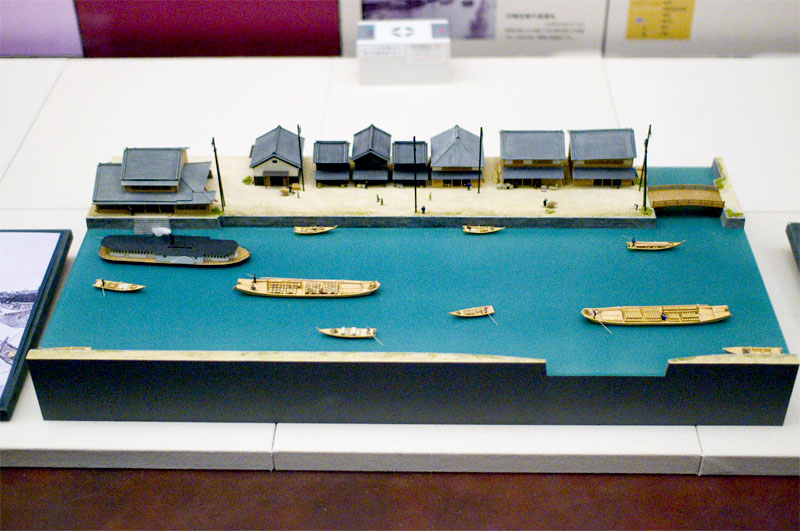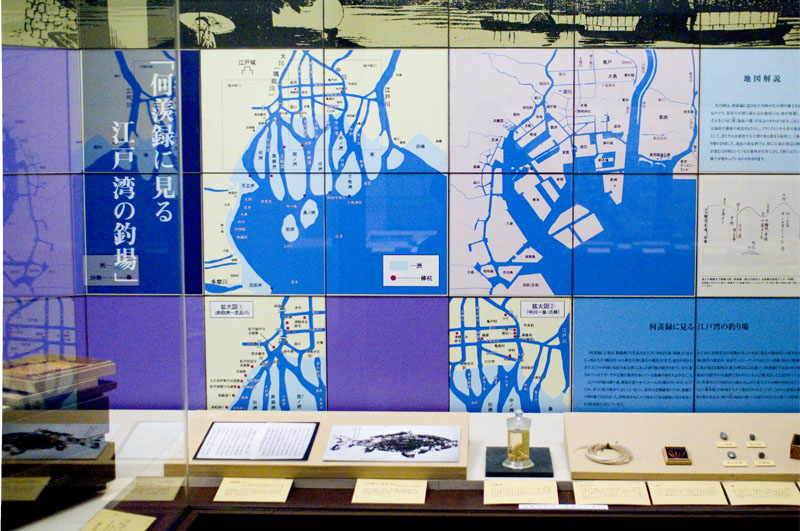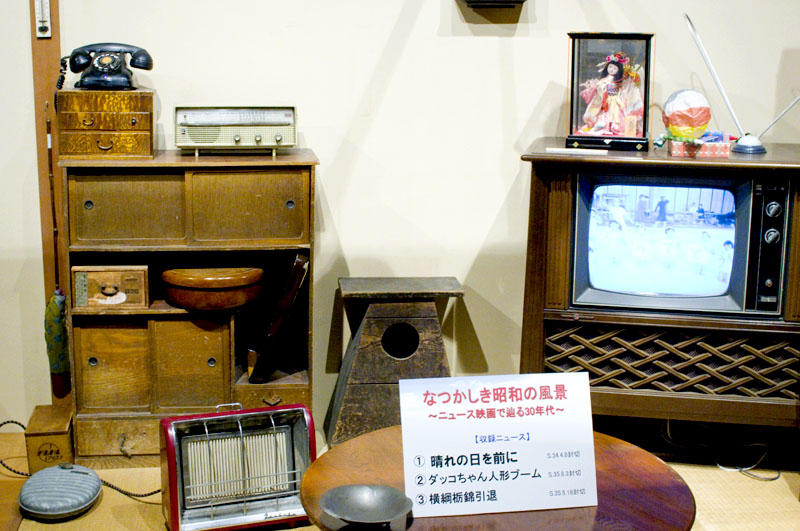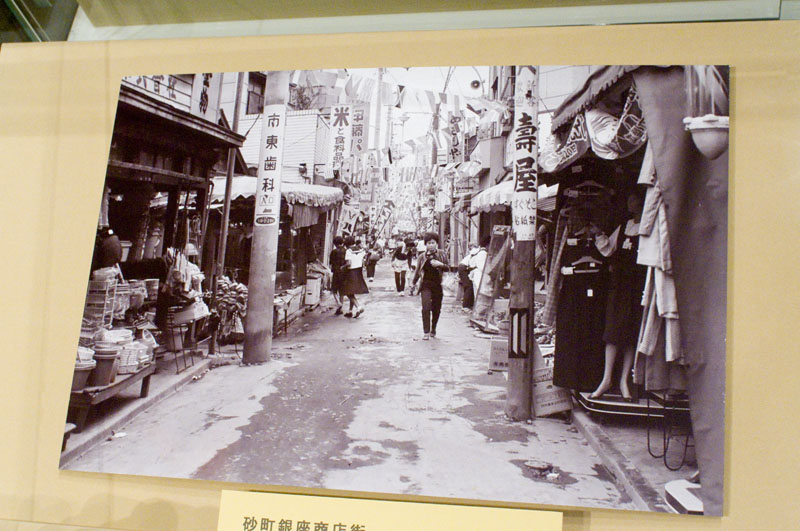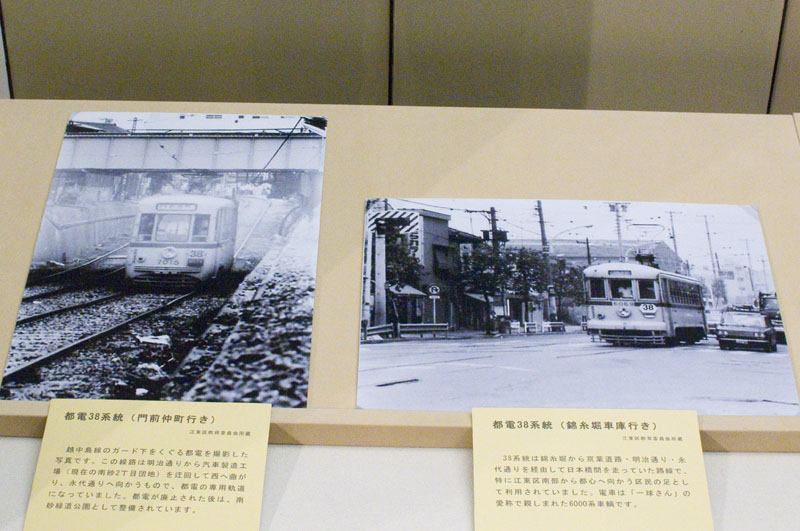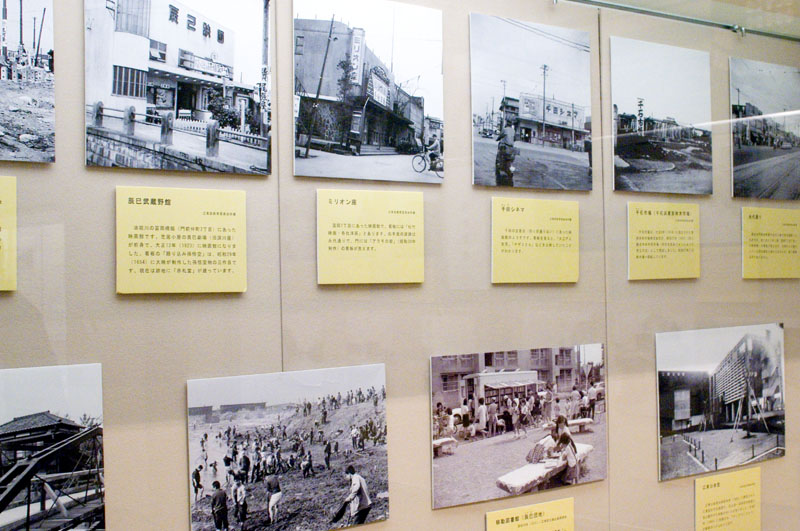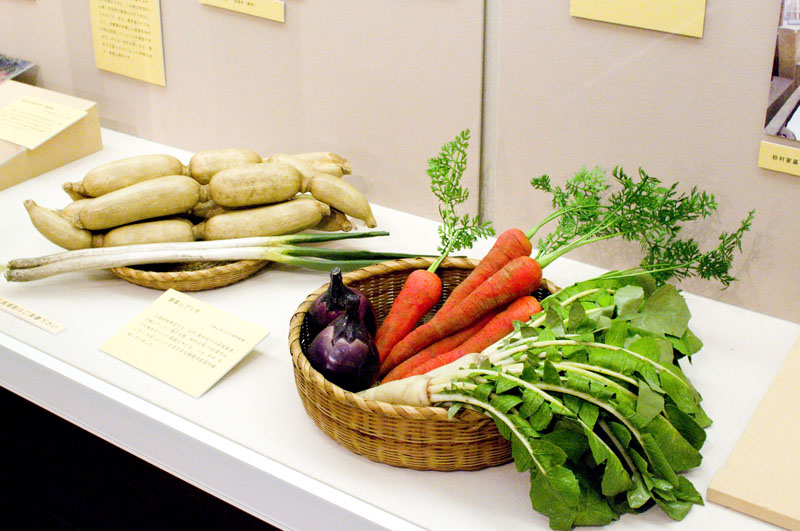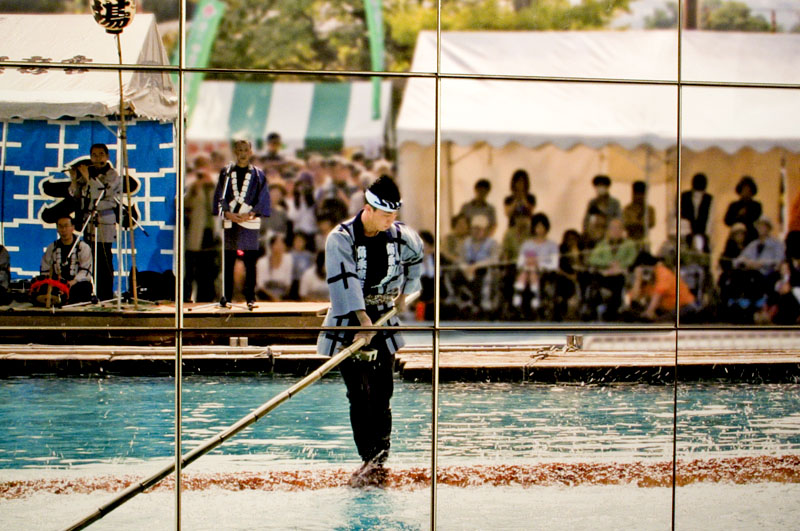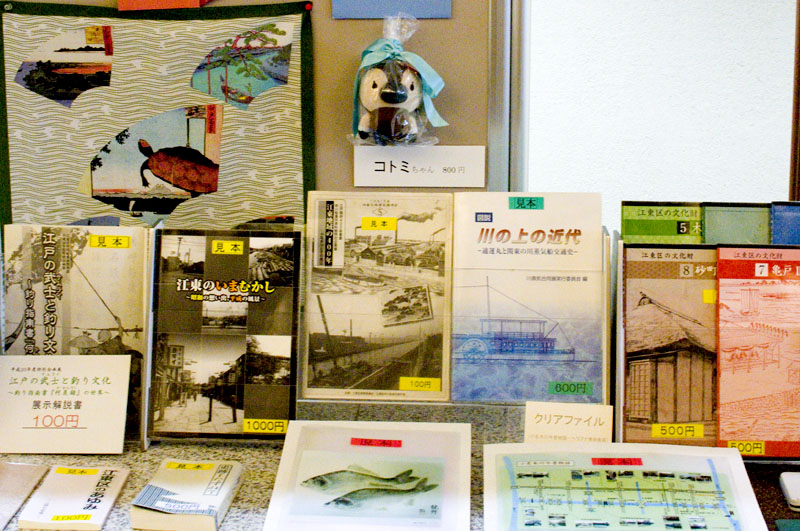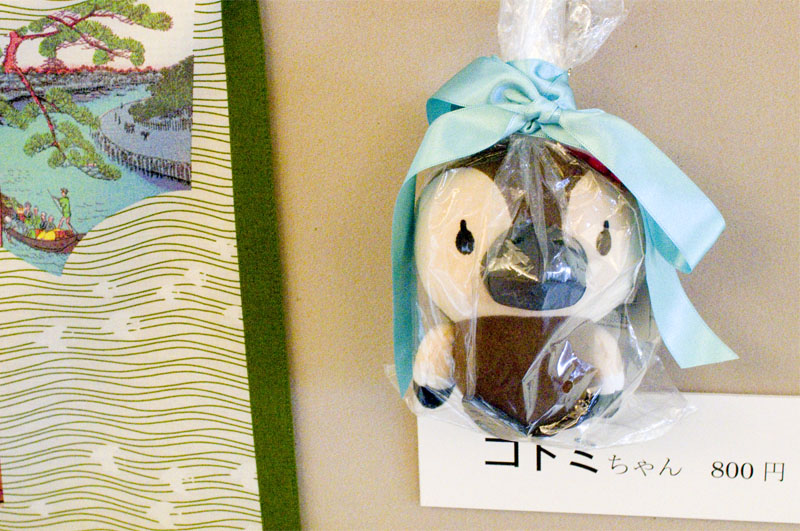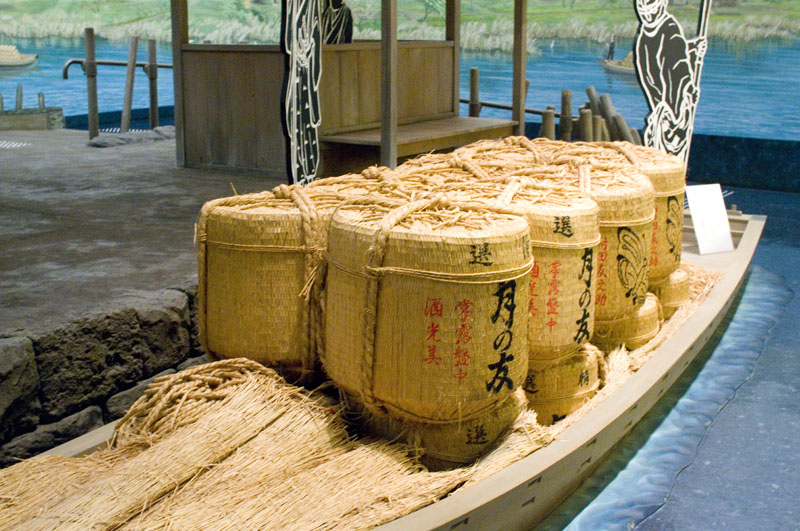
The pre-industrial history of Koto-ku in eastern Tokyo is intimately tied to its rivers and canals, and the top half of this small, rather specialized museum focuses on the theme of water transportation. The other half looks at daily life in this corner of Tokyo sixty years ago, with an excellent collection of photographs from that era.
The museum course starts on the third floor with an impressive life-size model of the Nakagawa riverfront guard station, which stood fairly close to where the museum is today. In the next room you can peruse reproductions of old maps and woodblock prints from the era, along with models of barges and old tools.
Down on the second floor the focus is on somewhat more modern times. There's a life-size reconstruction of a tiny 1950s-era apartment, filled with modern conveniences like a television set and electric rice cooker. Other exhibits are devoted to local vegetable cultivation, fishing implements, and riverfront life in general.
The highlight for us was the extensive collection of locally shot photographs from the 1960s. These cover everything from houses and shopping areas to festivals and busy outdoor markets. One big section is devoted to the streetcar lines that once ran through the neighborhood.
Exhibits are almost entirely in Japanese, but the photographs and life-size reconstructions convey a lot even without captions. There's a very small museum shop on the ground floor, selling mostly Japanese-language books about the history of the area. You can also purchase your own plush toy of Kotomi-chan, the strange birdlike mascot character of Koto-ku.
